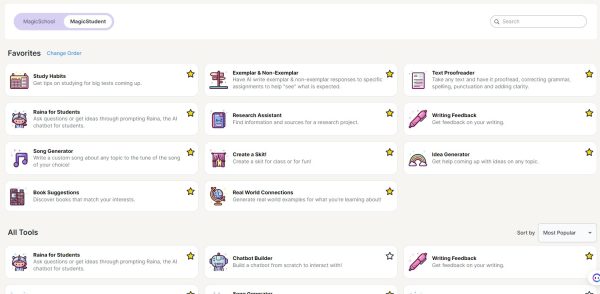Artificial Intelligence, or AI, is all around us. Some tools and resources that we all use every day use artificial intelligence. For example, grammar tools like Grammarly and LanguageTool are considered artificial intelligence. Everyday resources like the Amazon Alexa, and Apple’s Siri are also AI. AI can be helpful and beneficial to society, as suggested in the previous examples.
AI can also be used inappropriately. For example, students might use AI platforms like ChatGPT to complete their school work. ChatGPT is an artificial intelligence platform that is free and available for all to use. ChatGPT can answer questions, complete tasks, and even engage in conversations. Students can ask questions about their school work, or even use ChatGPT to write a paper or complete a math problem. This is one inappropriate use of AI, but, on the other hand, ChatGPT can be an appropriate tool for students. It can be a resource that can help students learn how to do an assignment and learn a topic. When used as a learning tool, AI can be beneficial. When used to complete homework without any effort, AI is not beneficial.
AI is spreading rapidly, and can now be found in unlikely places. For example, Snapchat provided every user with their own personal AI. Users can customize the looks and name of the AI. The Snapchat AI acts as any other person on Snapchat. Users can chat with this AI and even send pictures. This AI can answer questions about any topic, and also produce papers or other assignments. People can simply take a picture of a question, math problem, or assignment of any kind, and the Snapchat AI will provide an answer. Artificial Intelligence has also been incorporated into Quizlet. There is now an option for an AI tutor, to which people can ask questions and the tutor will provide an answer and explanation. Quizlet also has a generative AI option. Users can upload notes or videos to Quizlet, and the generative AI will provide an outline of the main points, flashcards, and essay questions to help students learn and understand.
Teachers and students alike use AI. Teachers use artificial intelligence to make lesson plans, make quizzes, and sometimes even correct student work. According to The New York Times article “How teachers and students feel about A.I.”, associate professor Katy Pearce at The University of Washington says; “I love A.I. chatbots! I use them to make variations on quiz questions. I have them check my instructions for clarity. I have them brainstorm activity and assignment ideas. I’ve tried using them to evaluate student essays, but it isn’t great at that.”
Some teachers believe that ChatGPT can be a good source for students to research information and express their own critical thinking about the topic. Nicole Haddad from Southern Methodist University said, “Before they even use ChatGPT, I help students discern what is worth knowing, figuring out how to look it up, and what information or research is worth “outsourcing” to A.I. I also teach students how to think critically about the data collected from the chatbot — what might be missing, what can be improved and how they can expand the “conversation” to get richer feedback.”(NYT)

In opposition to this idea, some students use AI to do their work for them, and do not use it as a resource to spark their own thoughts and ideas. According to the same New York Times article, Emma Nazario, a first-year student at Wheaton College, “A.I. chatbots can give students an out. You don’t have to think about a text deeply or write about a connection that you had to find, you can simply just ask a robot to analyze a quote, and it will do it in a matter of seconds. I don’t know the effects that A.I. will have on students in the long run, but I just don’t want it to make students lazy, as the joy of learning is that “AHA!” moment that comes from figuring something out yourself”.
Although all of this artificial intelligence can help improve the overall intelligence and efficiency of society, it can also be harmful. Some people are concerned that AI can be an invasion of privacy or even steal information. For example, some people believe that AI platforms like Alexa and Siri are always listening, and using conversations to provide specific advertisements that have to do with their interests and what they talk about. As AI is becoming more prominent in society, we have to learn how to use it safely and effectively, and make sure it helps and does not harm society.


